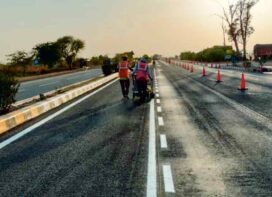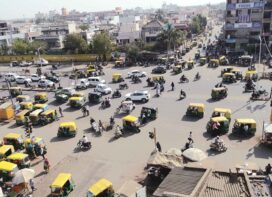
Akhilesh Srivastava, World Economic Forum, Leading Road Safety 2.0 in India
The reason for unsafe roads is complex and multi-faceted, requiring a systematic approach: road safety management, safer road users, safer vehicles, safer infrastructure, and post-accident care. The conventional measures for road safety are not yielding the desired results and there is an urgency for a new approach, writes Akhilesh Srivastava, World Economic Forum, Leading Road Safety 2.0 in India.
India also has the second largest population and road network in the world, spanning over 6.2 million km and expanding at a rate of 200k KMs per year. But, India ranks worst among 199 countries with the highest number of road fatalities. The reported figures of > 150,000 road fatalities annually dent the Indian GDP by ~ INR 4.3 trillion (3.14% of GDP).
World Economic Forum led Road Safety 2.0 is one such next-generation approach, which focuses on the infusion of IR 4.0 technologies in road safety to achieve quicker results, to scale up awareness of the socio-economic impact of road accidents and to assist in creating a financially self-sustainable ecosystem in public-private partnership model towards road safety in India.
Road Safety 2.0 believes in harnessing the power of technology to save lives on Indian Roads. It encourages innovative technology adoption in road safety, developing collaborative and self-sustaining models, raising awareness of the economic benefits of road safety to society, and assisting governments in developing tech-driven infrastructure.
After detailed analysis & deliberations with stakeholders, WEF launched four core pilots in collaboration with partners through a kick-off meeting chaired by Niti Aayog, MoRTH, United Nations, World Bank and attended by Industry leaders & road safety experts. Details enclosed, please. The core pilots include:
- Pilot-1: Improving driving behaviour using Artificial Intelligence to detect drowsiness and track driving behaviour and convert into driving scores, incentivising good driving scores by rewarding the scores at fuel stations, insurance, wayside amenities etc.
- Pilot-2: Improving School Zone and creating social awareness through children.
- Pilot-3: Improving enforcement system by detecting traffic violations using IoT, ANPR, cameras and issuing automated penalty tickets on PPP model.
- Pilot-4: Improving emergency service availability within golden hours using IoT, V2X, QR code for emergency help services and alerts before blackspot area.
The Four pilots focus on technology integration with the 4 Es of road safety and are on track with good results trying to create a sustainable ecosystem.
- Education,
- Engineering,
- Enforcement and
- Emergency care
The initiative has been sharing opportunities with the existing and exploring new partners for participation in Road Safety 2.0. The initiative is looking to collaborate with FICCI and other civil societies & social groups for a mass campaign to create awareness about the socio-economic impact of road safety.
Pilot -1: HumSafer: Digital Road Safety Solution
There are about 80 lakh truck drivers, across India according to a . The majority of truck drivers are single owners and their ecosystem is highly unorganized – there are neither standard rates, schedules, shifts, routines, nor any union or unity amongst them.
The drivers are not left with any savings, which makes it difficult for them to plan their future thoughts in life. AI-based Road Safety Solution that aims to cut the rate of road incidents to zero. HumSafer aims to reduce road accidents and improve the lives of drivers.
Pilot 2 – Enforcement of traffic rules by detecting violations using IoT, ANPR, Speed cameras in the Public-Private Partnership model.
In India, nearly 15 million traffic violations take place annually, these violations lead to collisions and accidents. When seen in terms of collisions only it works out to 0.8 collisions per 1000 vehicles for nearly 190 million vehicles and 1.35 billion population. It is practically impossible to detect such a large number of traffic violations and penalize them manually. There is an urgent need to use the latest technologies like IoT, ANPR, CCTV and Speed cameras to detect these traffic violations and penalize the violators by automated systems. Considering the size of India, it has to be on the PPP model only to be successful. The aim of this pilot is to Enforce traffic regulations by detecting violations using IoT, ANPR, CCTV and Speed cameras and generating an automated penalty slip for violations.
 TrafficInfraTech Magazine Linking People Places & Progress
TrafficInfraTech Magazine Linking People Places & Progress


